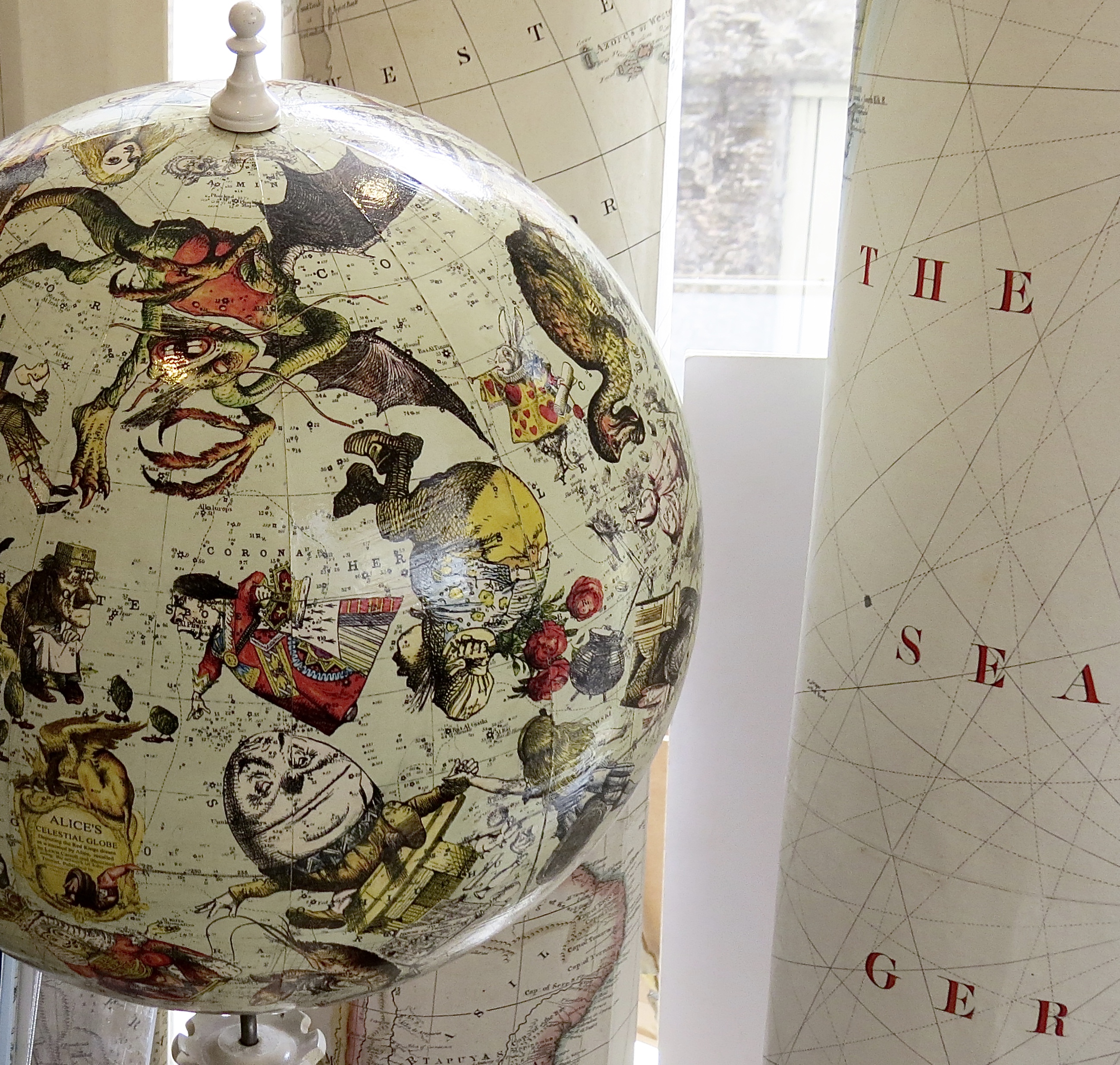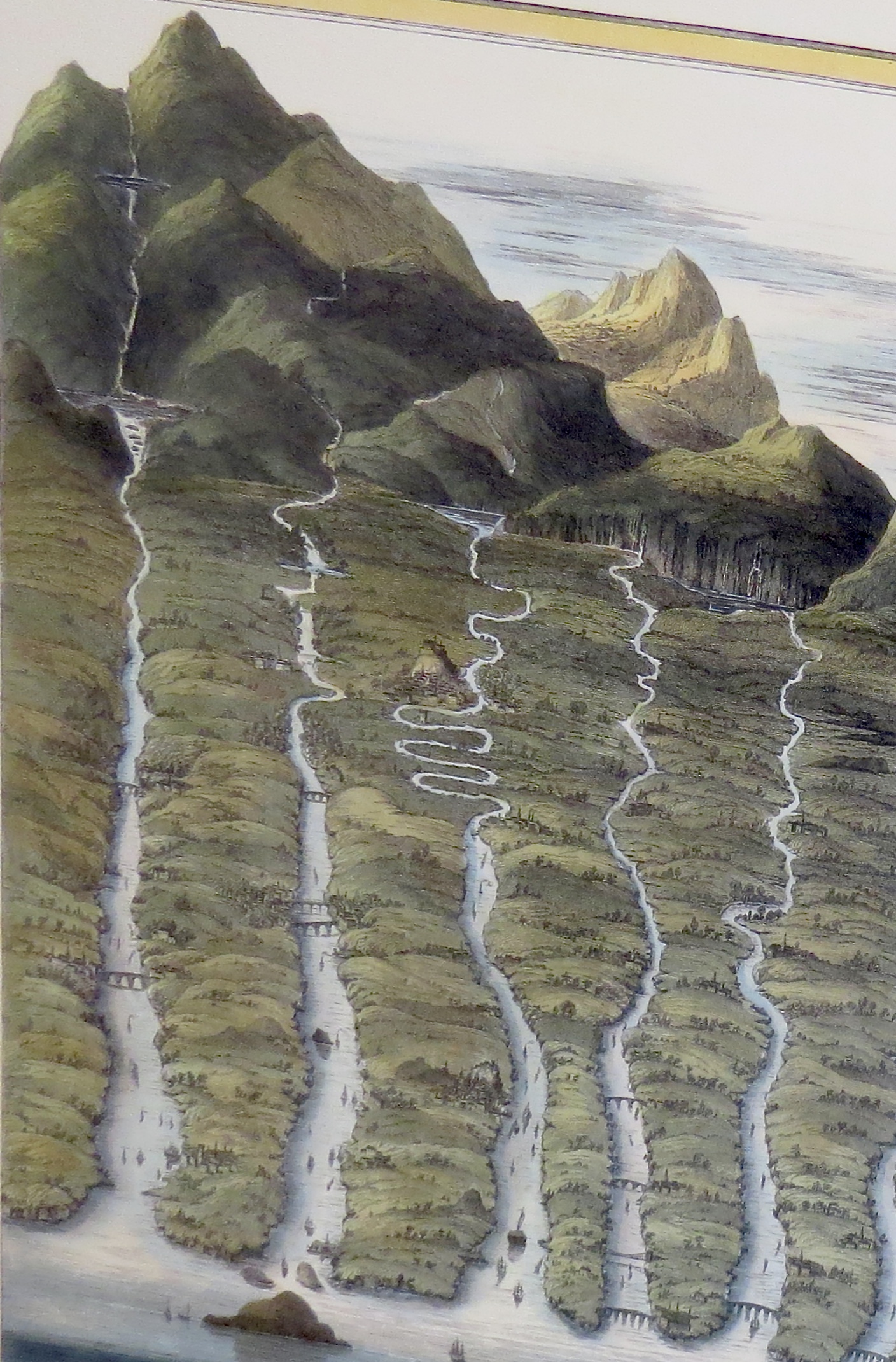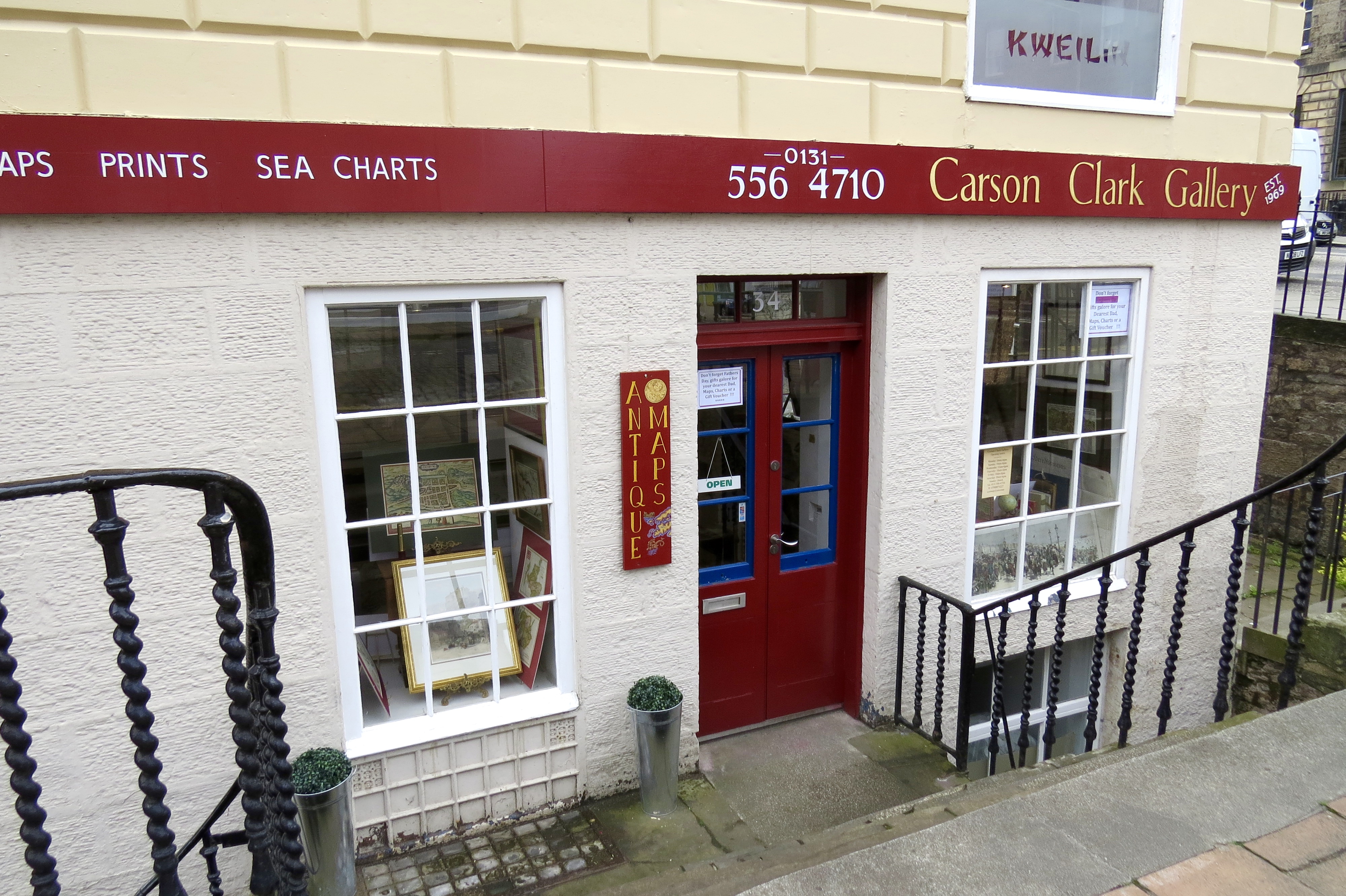
THE CARSON CLARK GALLERY
It’s not that often that I feel like a Mongol emperor, believe it or not, writes David Hill. Today, however, happens to be one of those rare occasions.
Finding oneself among the cartographical delights of Carson Clark Gallery’s new Northumberland Street shop is rather like descending into the domain of a New Town Marco Polo. This makes me, as far as I’m concerned, an inquiring Kublai Khan.
The business, now run by Carson Clark’s son Paul, has been a purveyor of antique maps to Edinburgh and the wider world since 1969, and recently relocated here from the Old Town.
Within its walls, an impressive array of curios are to be found, dating from around the late 15th up until the 19th century. These include physical and political maps, marine charts, city plans, even representations of the strategic movement of troops.

Maps in the round
Other fascinating objects on display include handmade globes. I find myself particularly taken by one that maps the celestial sphere, and, rather splendidly, features Alice in Wonderland characters in place of the constellations.
It would make a well-appreciated birthday or Christmas present if any of you are feeling unusually generous.

I learn that the earliest printed maps were produced from a design cut into a block of wood. The oldest item currently in stock is one such woodcut: a hand-coloured map of the Anatolian city of Nicaea from the Nuremberg Chronicle, dating from 1493.
The mainstay of the business are maps and charts produced using the intaglio process, whereby the design is initially engraved onto a copper plate. This was the main method of map printing from around 1560 until well into the 19th century.
One such example is the earliest detailed study of this country, Johan Blaeu’s Atlas of Scotland (1654) – available here as a rare, untinted copy which looks fresh off the press.
Northerly migration
Clark, when pressed, expresses a particular fondness for the artistry of the early woodcuts and, to me, this preference for the old ways mirrors his motivation for moving to the New Town.

He says the Royal Mile and surrounding streets have, over the years, become increasingly challenging environments for businesses not geared towards the tourist industry.
The few remaining that could be called, in the best possible sense, ‘old-fashioned’ find themselves sitting incongruously, and perhaps financially pressed, among the pile-’em-high outlets.
It is, I feel, a source of regret to many among us that part of Edinburgh’s World Heritage Site has become dominated by emporia which are high-volume in all senses of the word while managing the impressive feat of being simultaneously high- and low-rent.
We may content ourselves with the knowledge that, in this case at least, the Old Town’s loss is very much the gain of the New.—DH
The Carson Clark Gallery is at 34 Northumberland Street, Tel. 556 4710, e-mail scotmap@aol.com
